NICK FRIEND: There was plenty of scepticism beforehand, but the tournament produced plenty of storylines and provided proof that coexistence alongside The Hundred is possible. Coaches, senior pros, youngsters and captains reflect on the last month
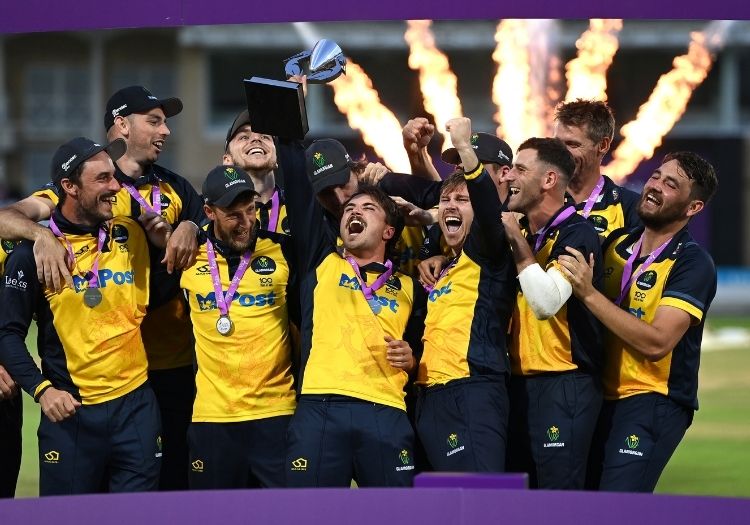
I want to start by debunking a myth. If you think this is what second-team cricket looks like, then you have not seen second-team cricket.
If this was simply a competition made up of second-rate county pros and untried youngsters, then what was Alastair Cook doing there? And why was Hashim Amla captaining Surrey? And how did it come to be that the final delivery of the tournament was bowled by Michael Hogan, 40, to Chris Rushworth, 35, a pair of domestic legends with 1,186 first-class wickets between them?
When that ball was edged behind to Tom Cullen, Glamorgan’s wicketkeeper, the sense of bedlam told the real story. The celebrations were of a team for whom this was a new feeling: the Welsh county were, until Thursday evening, the last of the 18 never to have won a one-day final. The celebrations were also for the depth of county cricket.
“It probably exceeded my expectations,” Worcestershire captain Joe Leach tells The Cricketer. “I was pleasantly surprised with how it came across.”
Durham batsman Graham Clark was similarly impressed, at least once the background noise vanished and a monthlong festival of 50-over cricket – much of it generously supported at outgrounds – could break out. It is no secret that confusion reigned almost until the first coin was tossed: even a week ahead of the start, rumours were trickling through the county game that the threat posed by the pingdemic, as much as the pandemic, might force the competition to be cancelled.
Beforehand, Clark recalls whispers that the tournament might be staged as an under-23 event, which would have ruled him out of contention, as well as other reports that overseas players – Durham had two in Cameron Bancroft and David Bedingham – would be unable to take part.
“No one really knew what was going on, so there was a lot of confusion with it,” he says. “It almost took away from what it was all about, but once you got stuck into the cricket, you saw some of the names playing. It’s only a good thing for the competition – and it has been good to see young lads getting an opportunity and playing without fear.
“It has been a really nice blend of playing with some really good, experienced campaigners who you worry about in the pre-match talks. But also, you end up being hurt by someone you’ve never heard of before.
“That’s the one thing that has really surprised me. If I’d been playing at 18 or 19, I don’t think I’d have had that confidence to do what they did. The competition has surprised me quite drastically with the standard of the young lads coming through, and also with how good it has been in terms of crowds.”

Only Durham's opening batsmen scored more runs than Alastair Cook, whose presence went against the popular misconception that the Royal London Cup would solely be a breeding ground for youngsters; his influence, no doubt, will have helped fledgling Essex batsmen Will Buttleman, Josh Rymell, Michael Pepper and Feroze Khushi
Even the final – the first to be staged at Trent Bridge rather than Lord’s – attracted an audience of 7,296 spectators, and although that might not seem like much, the ECB have already accepted that holding the game on a Thursday instead of its traditional weekend berth was “a one-off” that will be rectified next year.
So, too, will the gap between the semi-finals and final that gave Durham and Glamorgan fans just 24 and 48 hours, respectively, to organise journeys and purchase tickets. Quite frankly, it spoke volumes for the way in which the competition captured the imagination of most supporters that so many turned out, especially given the proximity – or otherwise – of the finalists to Nottingham.
For, this will take a bit of getting used to. Ahead of the final, Durham captain Scott Borthwick confessed: “It’s almost like an FA Cup final not being played at Wembley.” In time, however, that shift will become more natural: Edgbaston only became the permanent host of T20 Finals Day in 2013 but is now synonymous with the occasion.
That was not the only change for this year, of course; the lack of television coverage until the final was disappointing, and Neil Snowball, the ECB’s managing director of county cricket, acknowledged himself in an interview earlier this week with The Cricketer: “There is no way I’m going to sit here and claim that we’ve got all the best white-ball cricketers playing in the RL50 because clearly we haven’t. They are playing in The Hundred.”
A day for Glamorgan, for Michael Hogan, and for a team of new heroes
Nevertheless, what remains is an excellent product, albeit different from before. It was a shame that some antipathy lingered towards the tournament from people whose anger at The Hundred’s intrusion on the summer as they knew it never allowed them to enjoy a competition that really and truly has been terrific.
To cast off its legitimacy as some kind of protest feels both like such a poor mistake and a missed opportunity. Indeed, one comment in response to my final match report described the result as “a travesty” that “devalued” the competition. The vast majority, it must be said, were far fairer; some even suggested they had never found it more enjoyable – whether entranced by the tightly packed club venues, the unearthing of the next big thing or the standout displays of class from proven performers.
So, for any fan of county cricket to disparage the standard as inadequate and to compare it to reserve-team cricket felt roundly disrespectful to the many pros without Hundred deals, who have spent the last month playing in a tournament that has thrown up so many terrific storylines. Because, yes, it was missing the 100 best players, but it also featured the next-best 300, who put on quite a show. All they saw was a trophy to win and cricket to play.
It is worth remembering that every county was affected, though to varying degrees, and as Leach puts it: “We lose guys to injury all the time and for various other things. It’s just the nature of our job that the side has a different look every now and then. It wasn’t by any stretch a free-for-all because we were missing certain players. It just felt normal, to be honest, but with different faces.”

Sussex's band of youngsters have not only been given an opportunity in the Royal London Cup, having already featured in the County Championship and the T20 Blast
One hopes that as the years go by, the accompanying narrative develops alongside it. The common consensus among those involved in this piece was that the level will only increase, now that any prior scepticism has dissipated: young players are a year better off, Covid replacements will hopefully be less prevalent, greater fluidity should be possible in a bubble-free world and more counties might see the success of this year’s itineration as a motivation to sign up an overseas gun. It was noticeable that the semi-finals featured Bedingham, Bancroft, Simon Harmer, Hamish Rutherford and Tim David.
As Leach says: “I didn’t get the impression actually that any side that we played against wasn’t looking to win at a cost of blooding three or four youngsters. I think for the competition to hold that integrity, counties taking it as seriously as they possibly can is really important. I actually think the competition has seen the benefits of that.
“Kyle Abbott got five wickets against us, but I don’t necessarily think there was anything wrong with that. From a county’s point of view, I think they have to try to make the standard as high as they can. The county membership obviously have an appetite to see their counties doing well while The Hundred is going on. Why not try to win it and go as far as you can?”
At the other end of the South African spectrum, Kiel van Vollenhoven, a 23-year-old leg-spinning allrounder, was handed a chance as one of more than 100 List A debutants competition-wide. He had been playing club cricket for Clifton Village and had trialled with Warwickshire’s second string, before receiving a phone call from second team coach Ian Westwood, who told him that the county were looking for a spinner for the month. He only played twice and went wicketless, but that feels beside the point.
“There was a considerable difference from the second team,” he confirms. The learnings from playing in front of crowds at Edgbaston and Sophia Gardens, as was the case for van Vollenhoven, are priceless. Often, if you want to watch second-team cricket, you have to find it – or stumble upon it. As Gloucestershire’s Ollie Price described it earlier this year, speaking to The Cricketer about the experience of facing Jofra Archer in a second-team game in 2019: “Normally, it goes under the radar unless you’re out there looking for it. So, it was a bit strange with Jofra when there were journalists around.”
Van Vollenhoven adds: “It was an eye-opener; the first time you field a ball on the boundary, you get a roar behind you. That’s a massive difference because you don’t get that in second-team cricket or any cricket until you get to that level. It’s a big eye-opener and a big change compared to what you would usually have.
“I definitely felt like a better cricketer. What I’ve learnt in this competition was chalk and cheese to just playing second-team cricket – the amount you learn from being in that environment, just watching how those players who’ve played at that level for a long period of time go about their business was fantastic.”
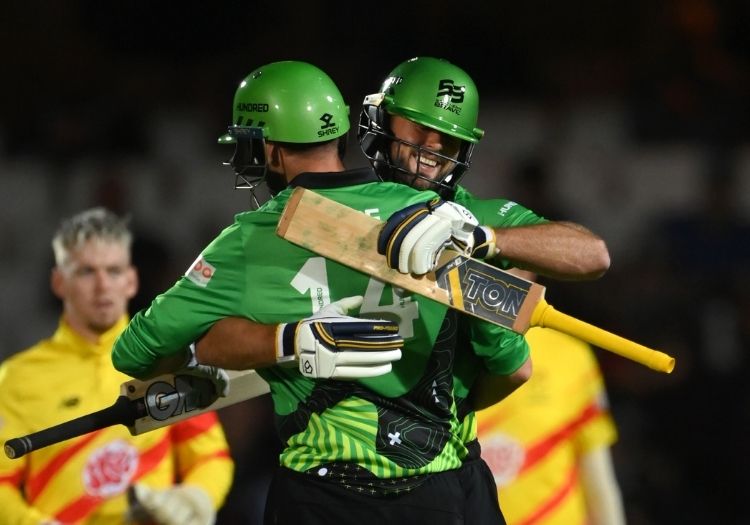
The common consensus from the voices involved in this piece was that The Hundred and the Royal London Cup have proven that they can coexist
Few counties blood more of their youngsters than Worcestershire, so Leach – in his role as club captain – is well-versed in what it takes to make the step up. He watched left-arm spinner Josh Baker and allrounder Jacques Banton make List A debuts over the last month, while Jack Haynes smashed his maiden professional hundred in front of a full house at Chelmsford in a win over Essex. Even at outgrounds, the same is true, with the atmosphere more intimate and the crowds generally nearer the boundary-fielders.
“Playing in front of a membership that’s expectant instead of 250 people is a new experience for young players,” he explains. “It’s good that it can be as close as possible to a Blast day, for example. I know it’s not the same, but we had extremely good crowds at New Road over four games. Our first two games on Sundays in particular were rammed. It’s really important as these young players do step into the Blast in the years to come – or the County Championship – they’ve kind of been blooded in a way that second team cricket just can’t do.”
At the same time, however, there is a fine line to be preserved between simply handing out opportunities for the sake of it and introducing youngsters at the appropriate moment. In a group stage that ultimately ended in frustration, with Worcestershire missing out on the knockout stages despite a fast start, Leach was at least reassured by the displays of his List A novices.
“It has been good to see the guys we’ve thrown in for this tournament have been successful because that probably shows that the timing was right,” he reflects.
And those youngsters are in the shop window now. “It might only have been a few games, but the experience of playing and having my name out there is incredible,” van Vollenhoven knows. As sport goes, some will have taken those chances to a greater degree than others: 17-year-old Jacob Bethell, the Warwickshire allrounder, had a terrific tournament, as did Somerset’s sprightly seamers, and Sussex’s band of teenagers.
Scott Boswell, 20 years on: A life rebuilt from the ruin of the yips
“Personally, I’ve learnt so much this summer about my own game and different tactics,” says Archie Lenham, the leg-spinner – also 17 – whose List A debut against Lancashire, albeit in agonising defeat, brought four wickets. “We probably should have come out on top in that game; lack of experience might have lost us that. But just knowing that we can compete with those guys just builds confidence, I think,” he says.
The arrival onto the scene of unknown talent added a fascinating dimension in a world where players and coaches are well researched and steeped in video analysis. Few came as a complete surprise, given the footage that is available even at second-team and academy level these days, but facing up to opposition for the first time comes with a different challenge.
“I think it just brings you back to the simplicity of basic gameplans,” reflects George Munsey, the Scotland international. “There aren’t many bowling meetings in the world where you don’t talk about the top of off-stump with the occasional bumper! Sometimes, you just have to do things on the fly and that can be the best way – and the most enjoyable way. You’re not overthinking things. As a batter, just watch the ball. I think this competition has allowed players to go out there and express themselves, without putting too much pressure on them.”
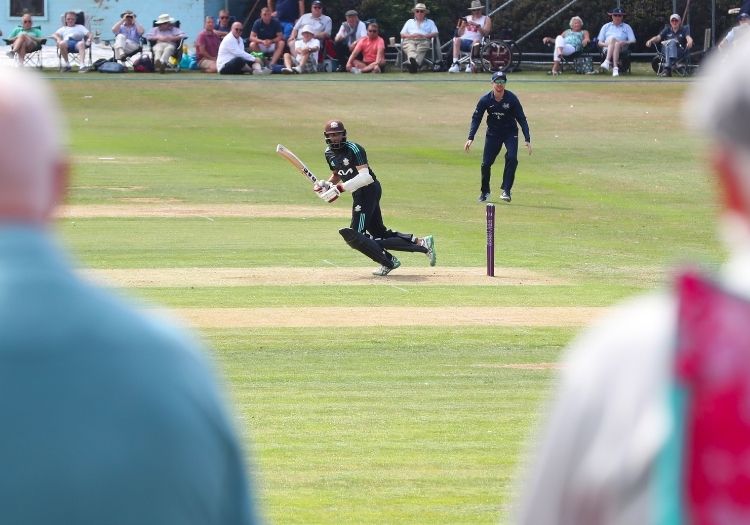
Hashim Amla, pictured here batting at Scarborough, captained Surrey until injury saw Jamie Smith take the reins
As van Vollenhoven puts it: “The one way I’d describe is that it felt like there weren’t any scars going around. People would play freely and enjoy it for what it is, if that makes sense. There was a bit of naivety, but to play in such a young squad was awesome because you could see and feel that the players like Will Rhodes, who has captained Warwickshire, were passing on the knowledge to the youngsters. And then, the youngsters were growing in every single game that they played and getting better. I found it fantastic. The experience that a lot of people my age and younger were exposed to is second to none.”
On that note, Steven Reingold ended up as a key allrounder in the winning team, having begun the season by impressing for Cardiff UCCE against Glamorgan. When the game looks back on the circumstances of this tournament, his story might just represent its epitome. Joe Cooke, a new county teammate, ended up as the tournament’s leading wicket-taker, having only made his List A debut in July – another young adult, like Reingold, to have benefited from the university system. Against Essex in the semi-final, he took five wickets and played a match-winning knock of 66 not out. His stock has risen markedly, you’d think.
That point is substantial in itself: for youngsters looking to make their way in the game or established pros desperate to achieve the stability of a contract extension, this has opened that door in a way that many feared might not happen when the pandemic struck and concerns centred around county budgets and the expendability of players.
At counties like Worcestershire, Blast winners in 2018 and runners-up a year later, it has offered the chance – in the absences of Ben Cox, Pat Brown, Dillon Pennington, Ross Whiteley and Moeen Ali – for players young and old to stake a claim for a role in a competitive, tightknit T20 squad.
Sussex's next generation: How James Coles, Archie Lenham and Danial Ibrahim are setting the trend
Look at Matt Lamb at Warwickshire, a 25-year-old who had gone four years without an appearance in this tournament but took four wickets, scored his maiden List A century and averaged 60. Gloucestershire’s Ben Charlesworth, who has missed all season with a serious shoulder injury, returned to score 390 runs at 65. Conor McKerr, one of Surrey’s plentiful seam bowling stocks, enjoyed the rarity of an extended run in the first team and repaid that faith with 18 wickets in 10 games. These have been potentially career-changing opportunities.
Clark was worried about his Durham future before it all began but ended the competition with his stock at its highest. “Hopefully, what this has done is secure my place here for a little bit longer,” he says, having somehow lost out on the player of the tournament award to Borthwick, his captain, despite more than doubling his run tally and churning out three separate scores of 140, 141 and 141 as the country’s leading run-scorer. “Durham have given me a lot in life and me wanting to play well for them is almost like that repayment.”
The way in which he reflects on The Hundred – and more specifically, the Vitality Wildcard system – is a fascinating insight into the new pressures that have come into the game this season.
It is one of the reasons for which the T20 Blast could well be played out to its conclusion ahead of the start of The Hundred next year; Snowball explained that he envisaged the race for wildcard spots as one of the “key connections” between the two tournaments.
For Clark, the opportunity became a burden as he sought to put together a run of form in Durham’s T20 campaign that might tempt suitors to take a chance on him. He maintains he felt in similarly good touch during the Blast and the Royal London Cup, going through the same processes in both; only, he averaged 20.92 in one and 80.75 in the other.
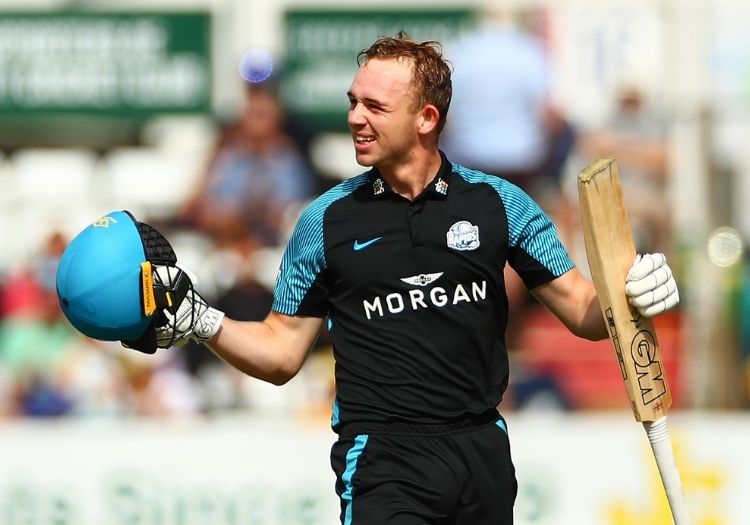
Jack Haynes' century against Essex will surely be the first of many
“I’d be lying if I said I didn’t have one eye on The Hundred,” he admits. “But it probably led to my downfall in the T20s. I was probably trying to do something a bit special to try to get noticed and picked up because I felt that the odds were pretty much stacked against me anyway.
“But once that wildcard came and went, it was almost a bit of a relief: it was over now so I could try to crack on with the season. When I came into the One-Day Cup, I was actually really nervous because I hadn’t performed as well as I’d have liked in the T20. We have a really strong batting line-up and there would have been guys who wanted my spot or wanted to move up and open up, so I felt quite under pressure. I felt like people were questioning why I should be opening when I hadn’t done as well as I should have done.”
That self-doubt has been put to bed now, and looking back, the experience of recent weeks has changed his perspective.
“I think what it’s done for me is make me realise that The Hundred isn’t the be-all-and-end-all,” he explains. Perhaps that sounds like an unusual comment from one of the tournament’s star batsmen, especially when his output will no doubt have alerted possible admirers ahead of the next player draft – it would be a surprise were Kiran Carlson to miss out on a gig, for example, having proven himself on the big stage – but it speaks volumes for the quality of the 50-over product that this is Clark’s takeaway.
A year of Dan Moriarty: From relative anonymity to one of the country's best spinners
For anyone still unsure as to what it would mean to win, you only had to watch Durham’s crestfallen players at the end, all well aware of the club’s backstory. They last won silverware in 2014 – champions in the same competition at Lord’s – and have been through plenty since; there was no downplaying the day’s significance.
“To have county cricket as your mainstay is a massive opportunity to upgrade your contract or your ranking within your team,” says Munsey, who scored 302 runs in five innings for Kent, having signed a deal for the duration of the tournament. “It was an opportunity where if you could lead your team to some wins, you’d only stand yourself in good stead for the future.”
So much so in his case that Simon Cook, Munsey’s coach in an interim capacity at Kent while Matt Walker was on Hundred duty, believes the tournament could become “a decent platform for the best associate cricketers to come in and play as overseas players”.
Cook loved his stint in charge, even if he’d have been forgiven for holding quite opposite feelings, given the extent of misfortune that befell his side, beginning with the Covid cases in the Blast and then continuing into additional losses to The Hundred in the shape of seamer Matt Milnes and captain Jack Leaning as injury and coronavirus replacements, as well as Fred Klaassen as a wildcard pick. “To say it was a challenge is an understatement,” he chuckles.
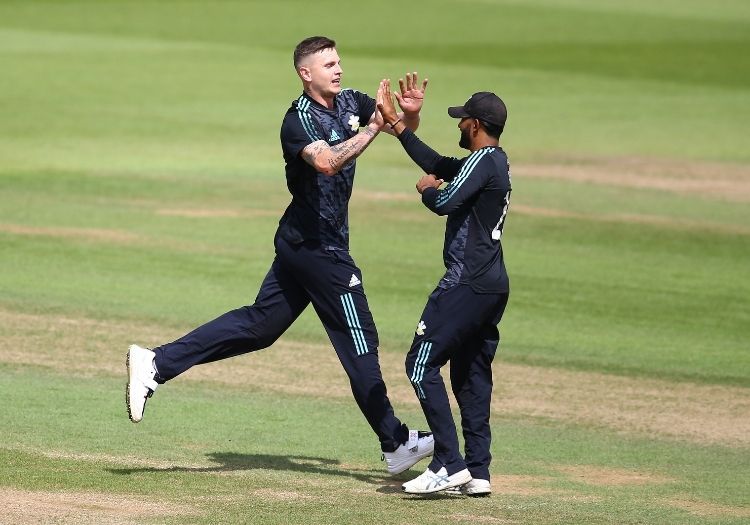
Conor McKerr and Ryan Patel were two of the tournament's breakout stars for Surrey, who were missing an entire XI's worth of talent
“We played Lancashire at Beckenham and I got a call as I was driving to the game, saying that Jack had been called up. He could play against Lancashire but at the end, he has to report somewhere in London. He ended up missing two games. Matt Milnes was exactly the same – we turned up at Essex and had a phone call, saying that he needs to go to meet up with his franchise, so we didn’t see him for the rest of the tournament.
“It happens just like that. There is no refusal, you have to let them go. That’s great – I’d never stand in front of them from going to play. From their perspective, they’re going to get a huge amount of experience from playing around some of the best players in the world.”
The relationship between the two competitions has been one of the most interesting aspects of this period, given the apparent division running through the English game.
“I do think, for the good of the game, we can coexist if everyone has an open mind and everyone doesn’t become too territorial,” believes Leach. “The way the competition has worked this year probably gives optimism that they can coexist. The Hundred seems to have been a massive success. It has its detractors, but the detractors have a perfectly good product in 50-over cricket as well. It didn’t become as second-rate as I think people thought it might.
“I think we all have to be careful that we take a step back and look at the bigger picture of what’s going on. Everyone wants cricket to succeed; the people who are pro-Hundred or anti-Hundred, everyone wants cricket to succeed.
“I think The Hundred is necessary, very much so. It has worked extremely well, but also so has the 50-over competition. Just because The Hundred has done well, it doesn’t mean the Royal London Cup hasn’t. We are all too quick to detract from the game at times. We don’t celebrate it often enough. I think the way that these last few weeks have been managed has been exceptional.”
How to solve a problem like the English summer schedule?
Kent captain Sam Billings found himself at the centre of a social media debate after he talked up The Hundred as ideal preparation for youngsters ahead of the T20 Blast quarter-finals, which take place next week. “For us as a club – and as Kent fans in general,” he said, “that’s what we want to do: produce England cricketers and franchise cricketers.” County supporters appeared to take particular umbrage at the final part of that comment, suggesting that players were not committed enough to their counties – an argument against which Billings fought back strongly.
Thursday’s final certainly lent support to Billings’ defence: David Lloyd – who has been playing for Welsh Fire – ran the drinks as Glamorgan’s 12th man, while club captain Chris Cooke watched on from the stands after the county opted to stick with the side that had reached Trent Bridge, rather than parachuting in their Hundred exports. Durham, on the other hand, selected Matty Potts and Ben Raine, though their hand had been forced by the departure of Paul van Meekeren to the Caribbean Premier League. There was no right or wrong answer.
Cook adds: “As a county, you want to be producing the best players you possibly can. You want your best players to be playing for England – you want them to be playing in The Hundred, you want them to be in demand. It’s a bit of a gauge as to how your system and your coaching structure is functioning. It’s a Catch-22 – the more successful you are, potentially the more of a headache you’re going to have, with players going off with England.
“Sam Billings is a classic case; I think we’ve seen him for two games this year so far. It’s a good thing and something that would always be at the forefront of our ethos and drive – to be producing world-class players. You deal with the fallout from that afterwards. If we’re having players called up to The Hundred from our Royal London squad, brilliant. Happy days. It would not bother me in the slightest; yes, it’s a bit of a headache, but that’s a brilliant headache for us to have – that our players are being looked at in that way. Our challenge is just to produce more of them.”
This competition allowed for that process to be fast-tracked. One of the most intriguing aspects of this tournament was its sense of social experiment. What would happen if you removed the senior pillars from a dressing room? Who might step up in the absence of senior leaders? How would the rest fare without their guidance?
Take Lewis Goldsworthy, the Somerset allrounder and a 20-year-old in his second year on the circuit. He has never reached fifty in 20 first-class and T20 matches but made four half centuries when bumped up the order in the Royal London Cup, making light of secondments for the three Toms: Abell, Lammonby and Banton. The same could be said for Ryan Patel, historically a bits-and-pieces doer for Surrey, but now the holder of two List A hundreds, one of which – at Guildford against Nottinghamshire – trebled his career six count. The self-belief these players have gained might just be the most important legacy of the competition.
The emergence of new leaders was nowhere more profitable than in Wales, where Carlson, 23, took the reins; he only completed his final university exam two months ago but led Glamorgan to a landmark title as stand-in captain beneath Dave Harrison, an interim coach.
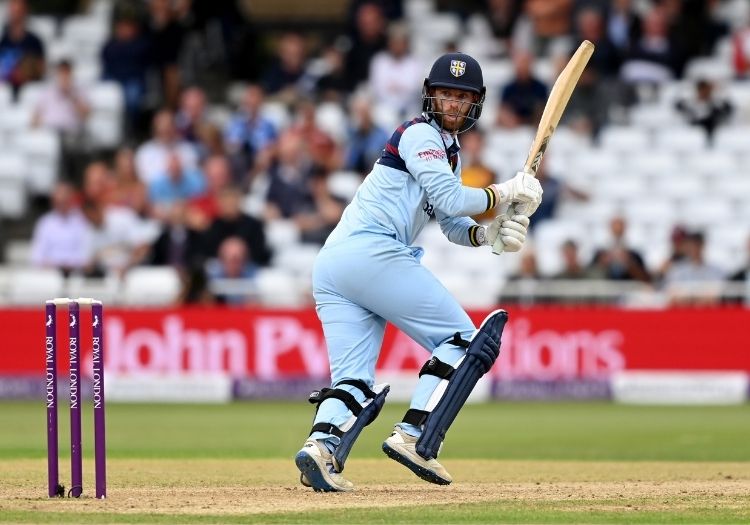
Graham Clark had the month of his life, making three separate scores of 140, 141 and 141*
Kent did similar, making Ollie Robinson vice-captain to Leaning, whose late Hundred call-up left Robinson in charge.
“To allow him to have a voice, I think, was excellent,” says Cook. “It was one of the really worthwhile things to do – he made some really good decisions, he will admit himself that he messed up a couple of times, but that is absolutely how we learn. We don’t learn anything by getting it right all the time or by not having that consequence. For Robbo, particularly from behind the stumps – he’s now going to be able to give a good voice to Daniel Bell-Drummond or Sam Billings or whoever’s captain.”
Indeed, at one stage Kent were without an entire top seven: Bell-Drummond, Zak Crawley, Joe Denly, Leaning, Jordan Cox, Billings, Alex Blake. Surrey were missing an entire eleven, the talent of which would have challenged in even the strongest Blast year: Jason Roy, Rory Burns, Laurie Evans, Will Jacks, Ollie Pope, Ben Foakes, Sam Curran, Jordan Clark, Tom Curran, Liam Plunkett, Reece Topley. But they are better stocked than most at the Kia Oval and still reached the semi-finals, while Munsey insists that Kent “still set out to do as well as we could and win the competition, as anyone should”.
Different clubs faced their own unique situations. “We turned up against Essex, who had one or two call-ups,” Cook laughs. “Essentially, it was the same team as in the T20 Blast, so that was a huge challenge and a great experience. Each county is probably in a very different situation and will probably grade the tournament differently, based on how they’re at.
“We spoke about not focusing on the opposition. For me, that experience of playing against those top players and watching how they construct an innings and how they get through tough periods was really valuable. We spoke a lot about parking the frustration of losing and the frustration of it not being fair and feeling hamstrung because we haven’t got Joe Denly or Zak Crawley or Sam Billings.
“We put that to one side and asked: in these situations, how are you going to get through this in the future? Because even if you’ve got Zak Crawley, if you can’t get him back on strike then you’re going to be in a bit of trouble. Young players are young players, and they want to win all the time, but we have to look past that a little bit and make sure that we’ve got the individual processes and procedures in place internally to allow you to have success. That will build and build and build.
“Next year, I think we will be in a very different space, even if we have exactly the same personnel. I think we’ll be a much better team. I think it would allow us to play a more balanced, effective team that is more based on performance than opportunity. We will be in a better state, with a lot of these players having played eight games of first team 50-over cricket against first-class opposition.”
Meet Sol Budinger, Nottinghamshire's next white-ball hitter
Scheduling, the buzzword for the English game at the moment, remains the main bone of contention, not least because teams that didn’t qualify for the latter stages of either the Royal London Cup or the Blast have had a 17-day break forced upon them at the height of summer, before the County Championship returns on August 30.
“For all the positives, this is the downside: being sat around in the middle of August, waiting for the next bout of cricket,” Leach admits.
For sides with a Blast quarter-final to look forward to, there is some frustration that staging the one-off knockout matches on the other side of the 50-over competition has quelled any momentum built up in the pool phase; Hampshire, for one, only qualified after winning five games on the bounce. Any impetus established then has long-since disappeared.
Glamorgan, though, will be bouncing. Hogan’s delivery, Rushworth’s outside edge, Cullen’s catch. Cue pandemonium on the pitch and unbridled joy in the stands. Memories that will live with those players forever. This is far more than a second-team competition.